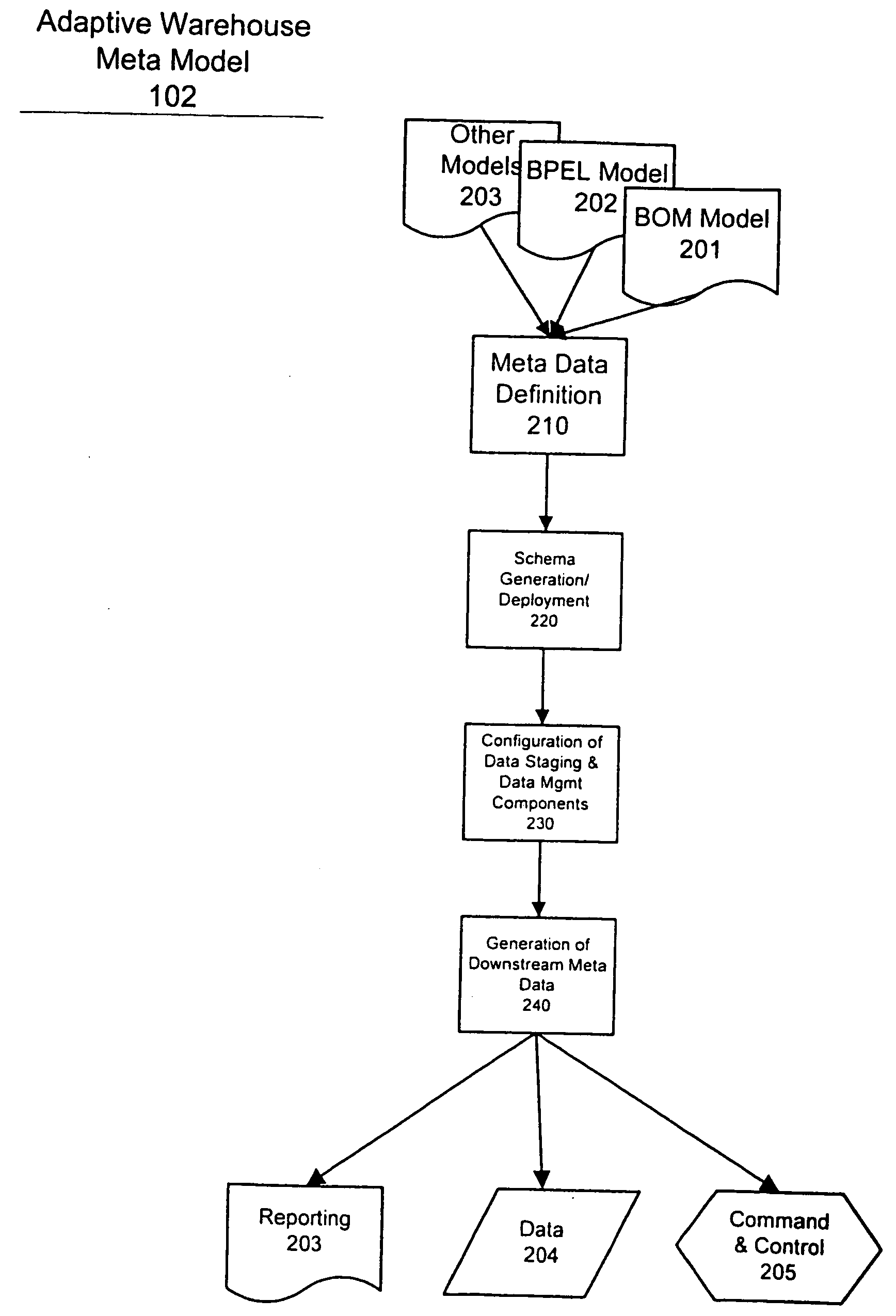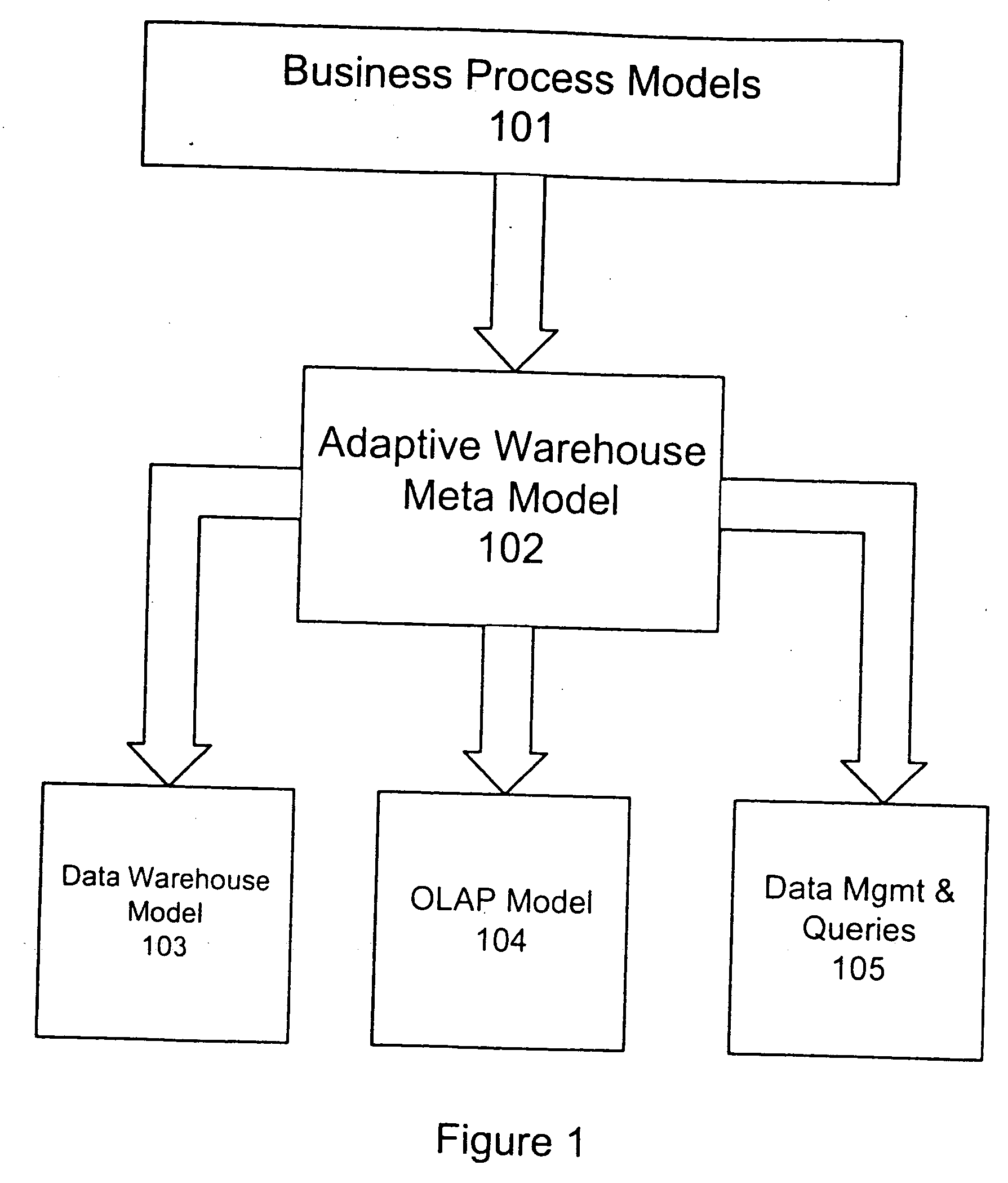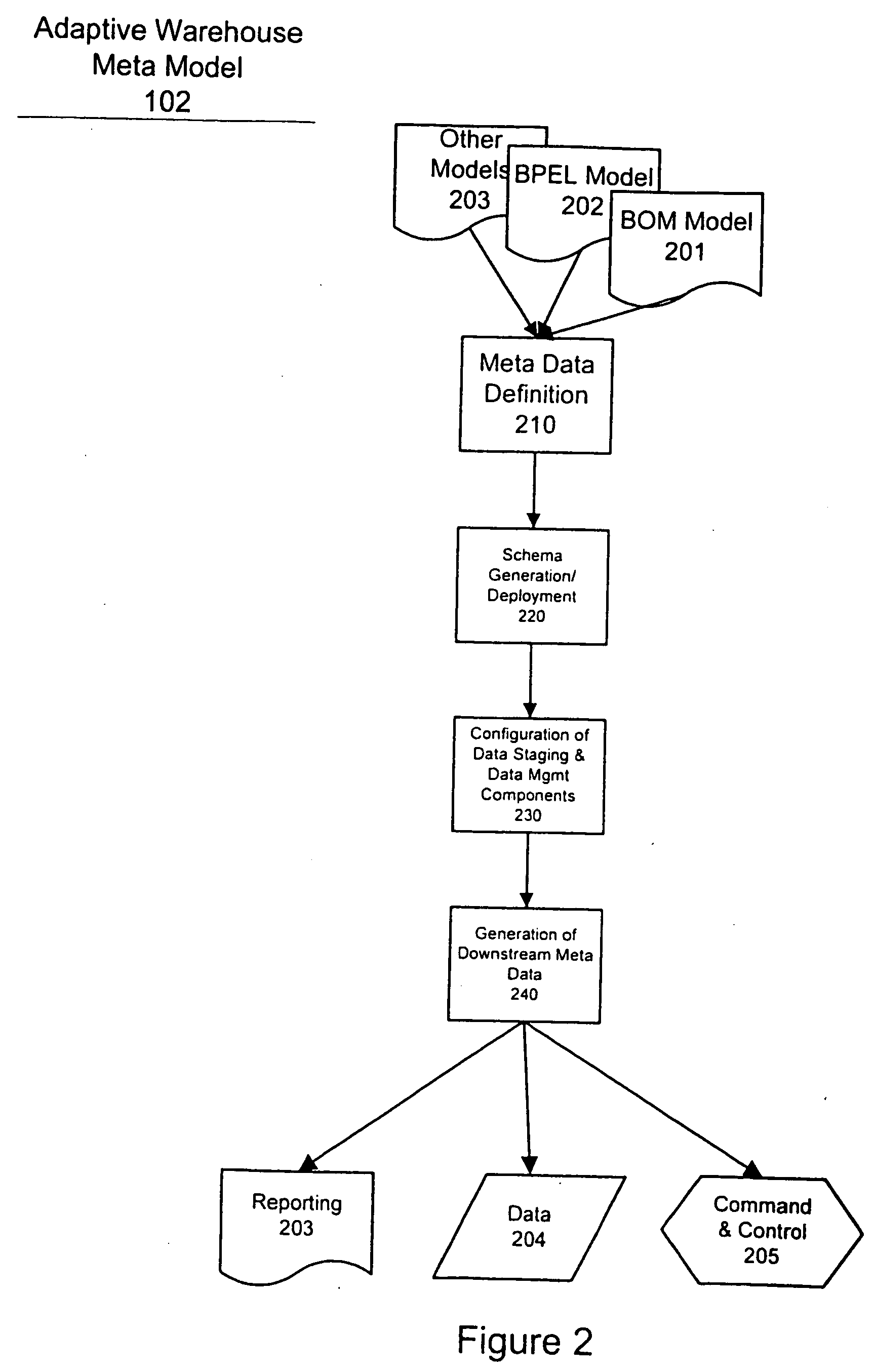Adaptive data warehouse meta model
a data warehouse and meta model technology, applied in the field of data mining technologies, can solve the problems of large amount of data exposed every day, data schemas of traditional data warehouse solutions are generally not designed to capture sufficient meta data about the relationship between data and geography or products, and on its own does not provide much information from a business
- Summary
- Abstract
- Description
- Claims
- Application Information
AI Technical Summary
Benefits of technology
Problems solved by technology
Method used
Image
Examples
Embodiment Construction
[0025] Business processes can change over time. Therefore, it is crucial that the data warehouse environment also adapts to these changes. Traditional data warehouse systems are built with the assumption that the data structure of business transaction does not change frequently. Referring now to the drawings, and more particularly to FIG. 1, there is shown a block diagram of the Adaptive Warehouse model according to the invention, which includes a computer implemented method, systems for performing the method, and software or firmware containing instruction sets for performing the method. The Adaptive Warehouse Meta Model 102 does not make the assumption that transaction data is static. Instead, the Adaptive Warehouse Meta Model 102 ensures that the data warehouse environment properly reflects the artifacts of business processes monitored with the business process models 101 such as Business Observation Model (BOM). The Adaptive Warehouse Meta Model 102 along with data management co...
PUM
 Login to View More
Login to View More Abstract
Description
Claims
Application Information
 Login to View More
Login to View More - R&D
- Intellectual Property
- Life Sciences
- Materials
- Tech Scout
- Unparalleled Data Quality
- Higher Quality Content
- 60% Fewer Hallucinations
Browse by: Latest US Patents, China's latest patents, Technical Efficacy Thesaurus, Application Domain, Technology Topic, Popular Technical Reports.
© 2025 PatSnap. All rights reserved.Legal|Privacy policy|Modern Slavery Act Transparency Statement|Sitemap|About US| Contact US: help@patsnap.com



